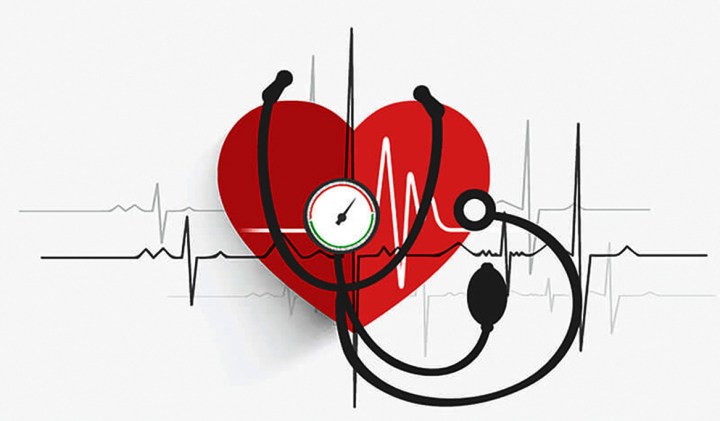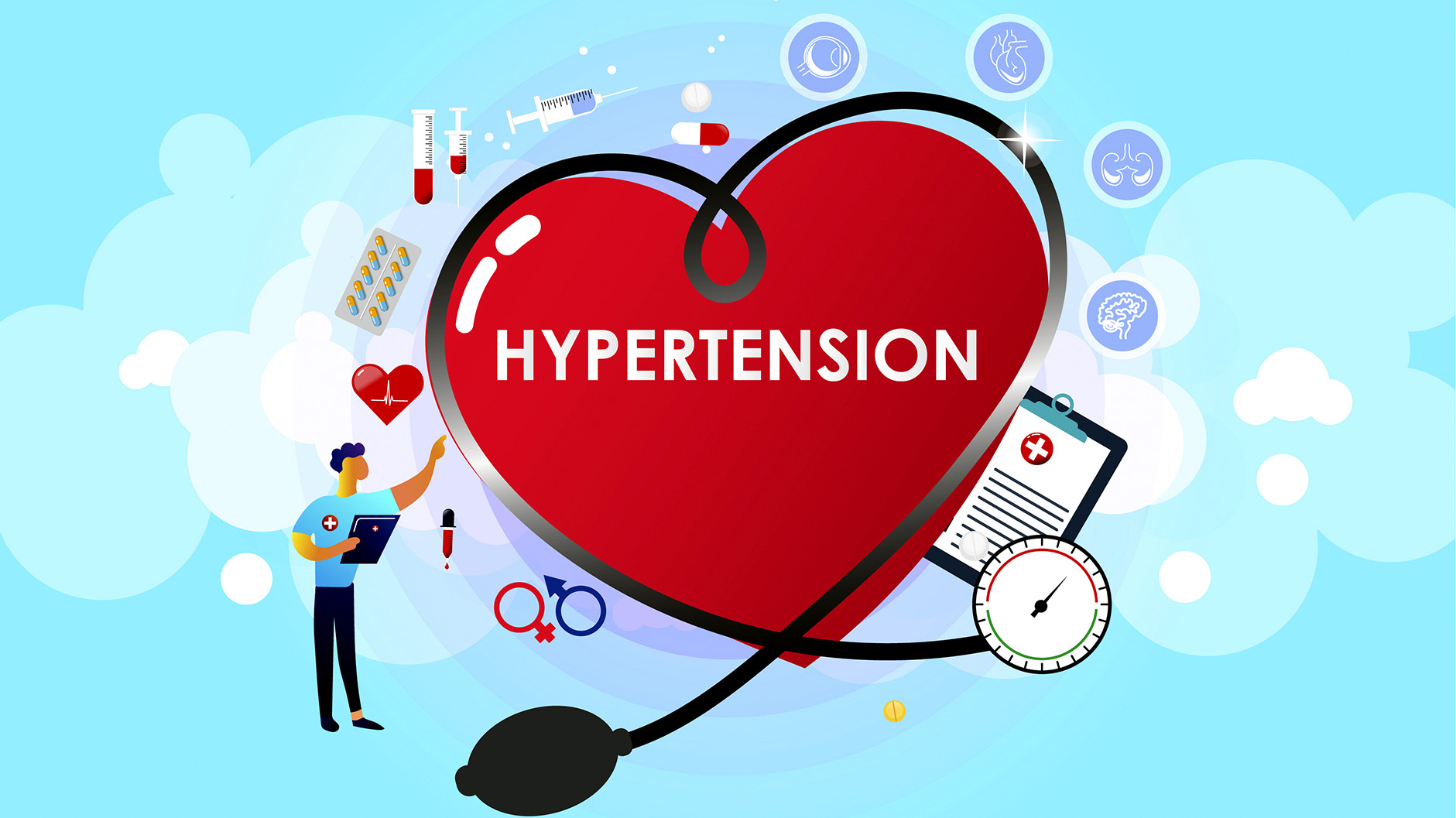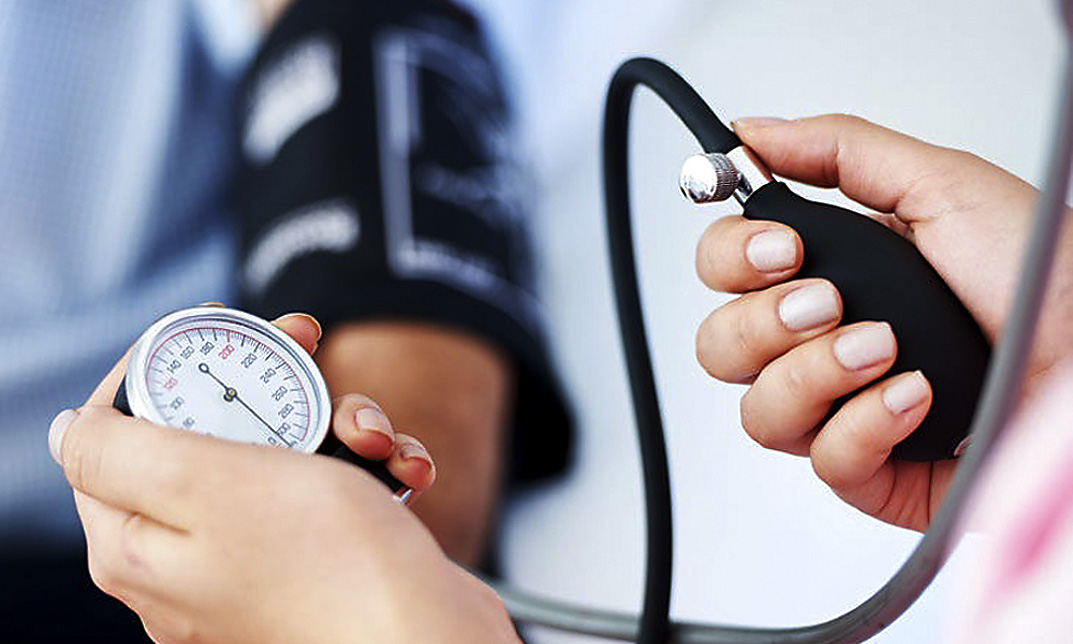Spotlight In-Depth
Under pressure: Hypertension is South Africa’s ‘silent killer’

It is estimated that about 45% of men and 48% of women older than 15 years have high blood pressure (hypertension) in South Africa and only about 19% of men and 29% of women who have this condition are aware that they have it. Elri Voigt unpacks the state of hypertension in the country and how it is diagnosed and treated.
High blood pressure (hypertension) is the leading cause of heart disease and premature death worldwide, according to an article in Nature. While it is not on the World Health Organization’s list of top 10 causes of death, it is an underlying cause of heart disease and stroke, which are on the list.
Yet many people are unaware they have the condition.
About 45% of men and 48% of women older than 15 years in South Africa have hypertension, according to a study in the journal Global Epidemiology. Citing these figures, senior specialist scientist for cardiometabolic and cardiovascular diseases at the South African Medical Research Council, and one of the study’s authors, Professor Nasheeta Peer adds that only about 19% of men and 29% of women who have hypertension are aware they have it.
What is hypertension?
According to Dr Vernice Peterson, a cardiovascular physiologist in the School of Physiology at the University of the Witwatersrand, hypertension occurs when blood pressure is consistently higher than normal.
She explains that each time a blood pressure measurement is taken, two values are generated – for example, a normal reading would be 120mm and 80mm of mercury (mm Hg). The upper value, referred to as systolic blood pressure, is the pressure in the arteries when the heart beats. The lower value, referred to as diastolic blood pressure, is the pressure in the arteries when the heart rests between beats. A medical professional will look at both of these values.
“Generally, medical professionals work in accordance with most of the major guidelines where it’s recommended that hypertension be diagnosed when a person’s systolic blood pressure, in the office or in the clinic, is greater than 140 and or their diastolic blood pressure is greater than 90,” Peterson says. These guidelines apply to adults who are 18 years and older.

When hypertension causes damage to the small vessels in the brain, it can cause a stroke, and can also lead to dementia. (Photo: narayanahealth.org/Wikipedia)
Petersen says hypertension is not generally diagnosed based on a one-off measurement, but after about two or three office or clinic visits and the visits may occur between one-week and four-week intervals depending on the blood pressure measured during the first visit.
The reason hypertension is not diagnosed after just one measurement or visit is that people often feel anxious in a clinic or doctor’s office, and this can cause a rise in blood pressure.
Guidelines of the Southern African Hypertension Society, as well as the International Society of Hypertension, guide the treatment and management of hypertension in South Africa, according to Peterson.
‘A silent killer’
Professor Brian Rayner, emeritus professor in the Division of Nephrology and Hypertension at the University of Cape Town, says that if someone has a slightly higher than normal blood pressure reading, for example 135 systolic, they aren’t considered truly hypertensive but it is cause for concern and should be monitored.
He warns that people should make lifestyle changes to try to normalise their blood pressure, since slightly elevated blood pressure can in time progress into high blood pressure.
Peterson advises that everyone gets their blood pressure checked at least once a year and to be aware of their blood pressure. “Self-care starts with knowing your blood pressure. Hypertension is well known to be a silent killer, and that’s because there aren’t any symptoms that are linked to hypertension.”
‘A host of complications’
Rayner says untreated high blood pressure can lead to a host of complications. “High blood pressure damages the small vessels in your body to the kidney (and) to the brain. It also accelerates the process, (along) with cholesterol and diabetes, to put plaque or atherosclerosis in your arteries,” he says.
Rayner says that when someone has hypertension the heart has to pump against that higher pressure, making it work harder, which can cause the heart to enlarge and eventually fail. It can also lead to damage of the small vessels of the kidney, eventually resulting in loss of kidney function and kidney failure.
When hypertension causes damage to the small vessels in the brain, it can cause a stroke. Another complication, Rayner says, is that damage to the small vessels in the brain can lead to dementia. It can also cause damage to the eye and is linked to loss of vision and optic atrophy.
“That’s why it’s important to have your blood pressure controlled. You largely prevent all those complications. Although it (hypertension) often comes with diabetes and other conditions, so [it’s] not 100% preventable, but it (having your blood pressure under control) makes a huge difference,” Rayner says. “But unfortunately, people don’t see the direct link between high blood pressure and heart attack or stroke, or kidney problems.”
According to Peer, strokes and heart attacks are the second and third leading causes of death in South Africa.
The numbers
The 2021 study cited by Peer compared results from two national surveys to identify changes in the prevalence, awareness, treatment and control of hypertension and found that the prevalence rose between 1998 and 2016 – from 27% (in 1998) to 45% in men and 31% (in 1998) to 48% in women.
Encouragingly, those who had been diagnosed with hypertension and were receiving treatment improved dramatically between 1998 and 2016. Treatment coverage improved from 8% in 1998 for men to 85% in 2016 while there was a 70 percentage point increase in treatment among women, from 12% in 1998 to 82% in 2016.
Treatment outcomes in controlling high blood pressure also improved. Among men who received treatment, 17% had it under control in 1998, which increased to 26% in 2016. Hypertension control among women on treatment over the same period rose from 21% to 30%.
Another study, published in 2017, looked at data from the 2011-12 South African National Health and Nutrition Examination Survey and found that there is a significant unmet need for care for hypertension. The data showed as high as 91.1% of the hypertensive population has some sort of unmet need for care.
What causes hypertension?
Hypertension is complex and the risk for developing it is influenced by a variety of factors, including lifestyle and behaviour, age, genetics and family history. Certain conditions, such as diabetes, can also lead to someone developing hypertension.
“Occasionally there are specific conditions that your doctor needs to look for that cause hypertension, like underlying kidney problems underlying endocrine problems (and) glandular problems. You may have an overactive adrenal gland [or] overactive thyroid gland. That may cause hypertension, so those account for 5% or less of cases,” Rayner says.
He says that women who experience hypertension during pregnancy are also at risk for developing hypertension in the long term. Another factor associated with increased risk of hypertension is stress, especially prolonged periods of stress, according to Peterson.
“Other factors that one should also consider are genetics and family history. We know that genes likely play a role in high blood pressure, heart disease and other related conditions,” she says. Family history and genetics can have such an impact that sometimes a person can be leading a healthy lifestyle and still develop hypertension. Because of this, Peterson says, it is vital for people to be aware of their family history, as well as the risk factors.
No formal screening programmes
Rayner says South Africa should have a hypertension screening plan, which does not exist at present. “Opportunistic screening is often the best because there’s no formal screening programme in South Africa.” Everyone should be screened regularly, even children, he says, because they too have increasingly been diagnosed with high blood pressure.
According to Peer, the National Department of Health is “embarking on a plan for a national non-communicable diseases campaign”.
Sandhya Singh, director of chronic diseases, disability and geriatrics in the department, told Spotlight that her department has received a directive from the health minister to launch and roll out such a campaign. Its aim is to enhance non-communicable disease prevention as well as “control outcomes by strengthening services at a community-level of care, provided mainly by trained community health workers”.
The campaign aimed to:
- Promote wellness at population and patient levels;
- Enhance early detection of diabetes and hypertension through screening;
- Promote links to care of persons identified during screening;
- Provide support for and empower patients diagnosed and their families; and
- Reduce defaulter rates and promote control.
“I am unfortunately not able to share further details as it is the minister’s prerogative to officially launch the campaign and announce roll-out plans, which we envisage will take place in the last quarter of this financial year,” she says.
When asked what the national screening policy is for hypertension, Singh says the hypertension user guide for adults at PHC level was recently approved and is being distributed to provinces, with training for healthcare workers also in the pipeline. These guidelines, finalised in 2021, highlight the importance of screening for hypertension, and that all adults 18 years or older who attend a primary healthcare facility must have their blood pressure screened.
Treatment in the public sector
According to Rayner, treatments for hypertension in the public sector are really good, but the options are restricted to single-drug pills rather than combination pills, which means people have to swallow many pills a day. He says most people will achieve blood pressure control, but usually with more than one type of medication.
“The weakness in the public sector is that we don’t have combination drugs like, for instance, HIV,” Rayner says. He adds that if the public sector could reduce the pill burden for patients with hypertension by providing combination pills, it could help with treatment adherence. Standard HIV treatment in the public sector currently involves taking one pill once a day, with the pill containing three different antiretroviral medicines.
Rayner says that in the private health sector there is a range of combination pills for hypertension of two or even three drugs.
According to Peterson, both the public and the private sectors will follow the guidelines which prescribe the use of specific medications for hypertension. However, the medications used will depend on whether the individual has other comorbidities.
“In most cases, the guidelines recommend combination therapy and very rarely do you find a patient being put on monotherapy. But again, it also depends on things like lifestyle or behavioural management,” Peterson says.

About 45% of men and 48% of women older than 15 in South Africa have hypertension. (Photo: healthline.com/Wikipedia)
She explains that doctors would need to consider whether or not a patient with hypertension also has other comorbidities, since their treatment options will be influenced by what works best in conjunction with those comorbidities. “For uncomplicated hypertension, and for individuals who have been newly diagnosed, they will most likely receive hydrochlorothiazides, calcium channel blockers and/or ACE inhibitors.”
Hydrochlorothiazides, known as diuretics or “water pills”, promote the loss of sodium and water through frequent urination, which decreases blood volume and ultimately drops the blood pressure, Peterson explains. Calcium channel blockers lower blood pressure by preventing calcium from entering the cells of the heart and arteries, allowing blood vessels to relax and open. Angiotensin-converting enzyme (ACE) inhibitors, in turn, act on a hormone system in the body known as the Renin-Angiotensin-Aldosterone System (RAAS). It inhibits the angiotensin-converting enzyme, which will ultimately cause the blood vessels to relax as well as decrease blood volume, which results in a drop in blood pressure.
Public sector medicine costs
Rayner gave Spotlight a list of medications used to treat hypertension in the public sector, which we cross-referenced with the current Master Medicines List to find the costs associated with the medications. The exact amounts vary based on the drug, supplier and dosage and tablet quantities.
- Hydrochlorothiazide, a diuretic, costs just under R5 for 28 tablets;
- Atenolol, a beta-blocker, costs R3 to R13 for 28 or 30 tablets;
- Enalapril, an ace inhibitor, costs R4 to R6 for 28 or 30 tablets;
- Losartan, which is an angiotensin receptor blocker, costs between R8 and R17; and
- The calcium channel blocker amlodipine costs between R3 and R5 for 28 tablets.
Rayner says doctors in some areas of the country use nifedipine, which costs between R43 and R65 for 30 tablets.
- Cardura (also known as doxazosin), which is an alpha-blocker, costs between R18 and R27 for 30 tablets;
- Spironolactone, a special type of diuretic, costs anywhere from R13 to R139;
- Minoxidil, a powerful blood pressure pill used in special cases, is by far the most expensive – R381 to R668 for 100 tablets; and
- Methyldopa, which according to Rayner is used to treat hypertension during pregnancy, costs between R50 and R71 for 56 or 84 tablets.
Cost of late detection
According to Peer, complications associated with hypertension can have economic consequences, particularly if a person is of working age.
“When this occurs in the working-aged employed population, it can affect livelihoods (loss of income) when people are unable to perform their work. This can exacerbate poverty,” she says.
This makes detecting and treating hypertension in its early stages vital, which makes screening for high blood pressure essential.
According to Peterson, the cost of being admitted to hospital for a stroke or a heart attack is extremely high, especially compared with the relatively low cost of medications used to treat hypertension. “The implication and cost of being hospitalised as a consequence of a stroke (or) a heart attack outweigh the relatively low cost of treating high blood pressure in the early stages,” she says. DM/MC
This article was produced by Spotlight – health journalism in the public interest.
[hearken id=”daily-maverick/8881″]



















 Become an Insider
Become an Insider
Comments - Please login in order to comment.